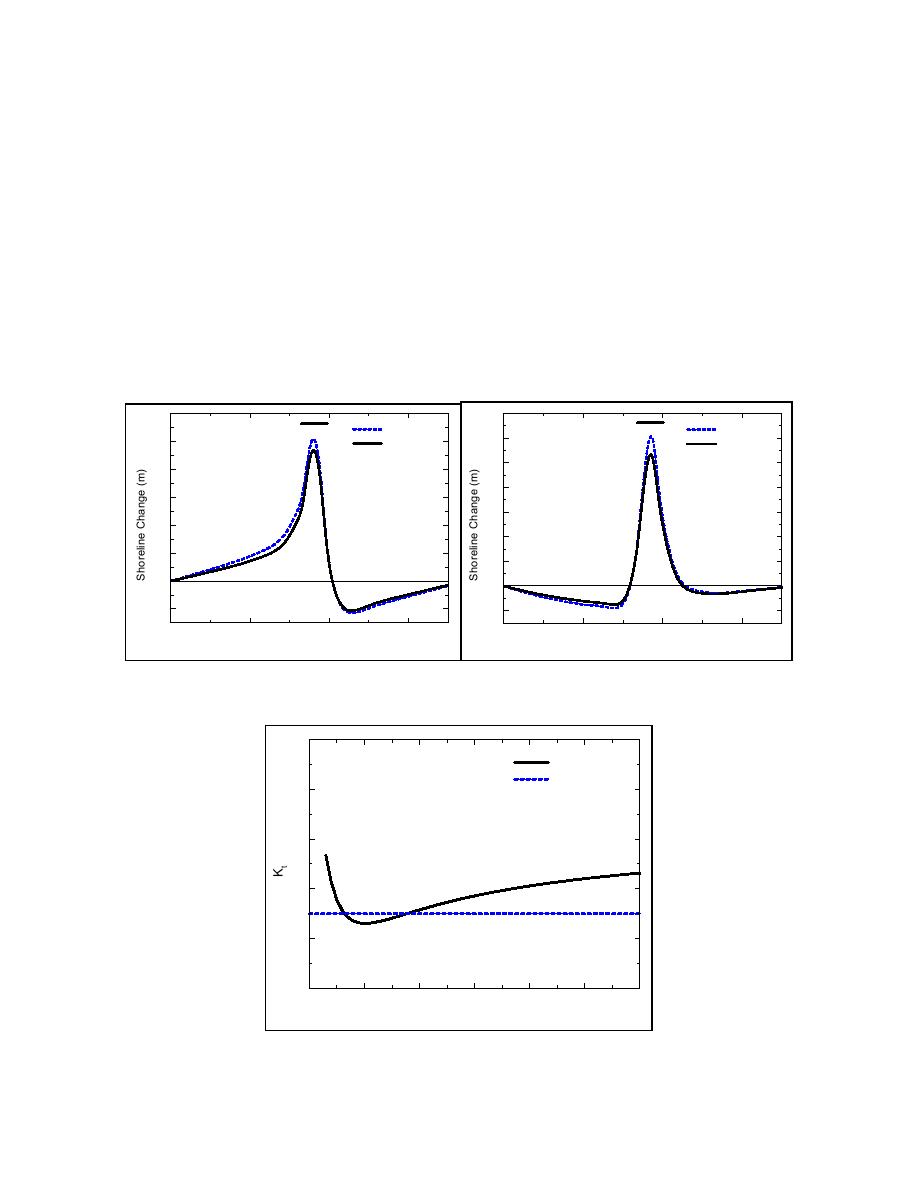
Emergent Near-Surface Structure
Figure 4 shows the 4-year shoreline position change behind a 300-m long detached
breakwater located 300 m offshore for the Atlantic and Gulf wave climates described above.
The crest of the structure is at elevation +1 m msl. The variable transmission simulation
predicts less shoreline change behind the structure for both wave climates. Figure 5 plots
change in Kt versus wave height at constant water level for the Atlantic wave climate and is
representative of the Gulf of Mexico results. The variable Kt results in less shoreline change
because, for rubble mound breakwaters with a crest located just above the still-water level, the
dominant mode of wave transmission is by runup and overtopping, and the efficiency of the
transmission process increases as the wave height increases. Thus, the variable Kt computation
increases the height of the larger waves and reduces the smaller waves relative to the constant
Kt simulation. The result is less shoreline advance behind the structure for the variable Kt
simulation.
140
120
Atlantic Wave Climate
Constant Kt
Constant Kt
Gulf Wave Climate
120
100
Variable Kt
Variable Kt
100
80
80
60
60
40
40
20
20
0
0
-20
-20
0
1000
2000
3000
0
1000
2000
3000
Distance Alongshore (m)
Distance Alongshore (m)
Fig. 4. Shoreline change behind an emergent near-surface breakwater
0.8
Variable Kt
Constant Kt
0.7
0.6
0.5
0.4
0.3
0
1
2
3
4
5
6
Wave Height (m)
Fig. 5. Change in Kt versus wave height at constant water level for emergent near-
surface structure
Wamsley et al
5



 Previous Page
Previous Page
